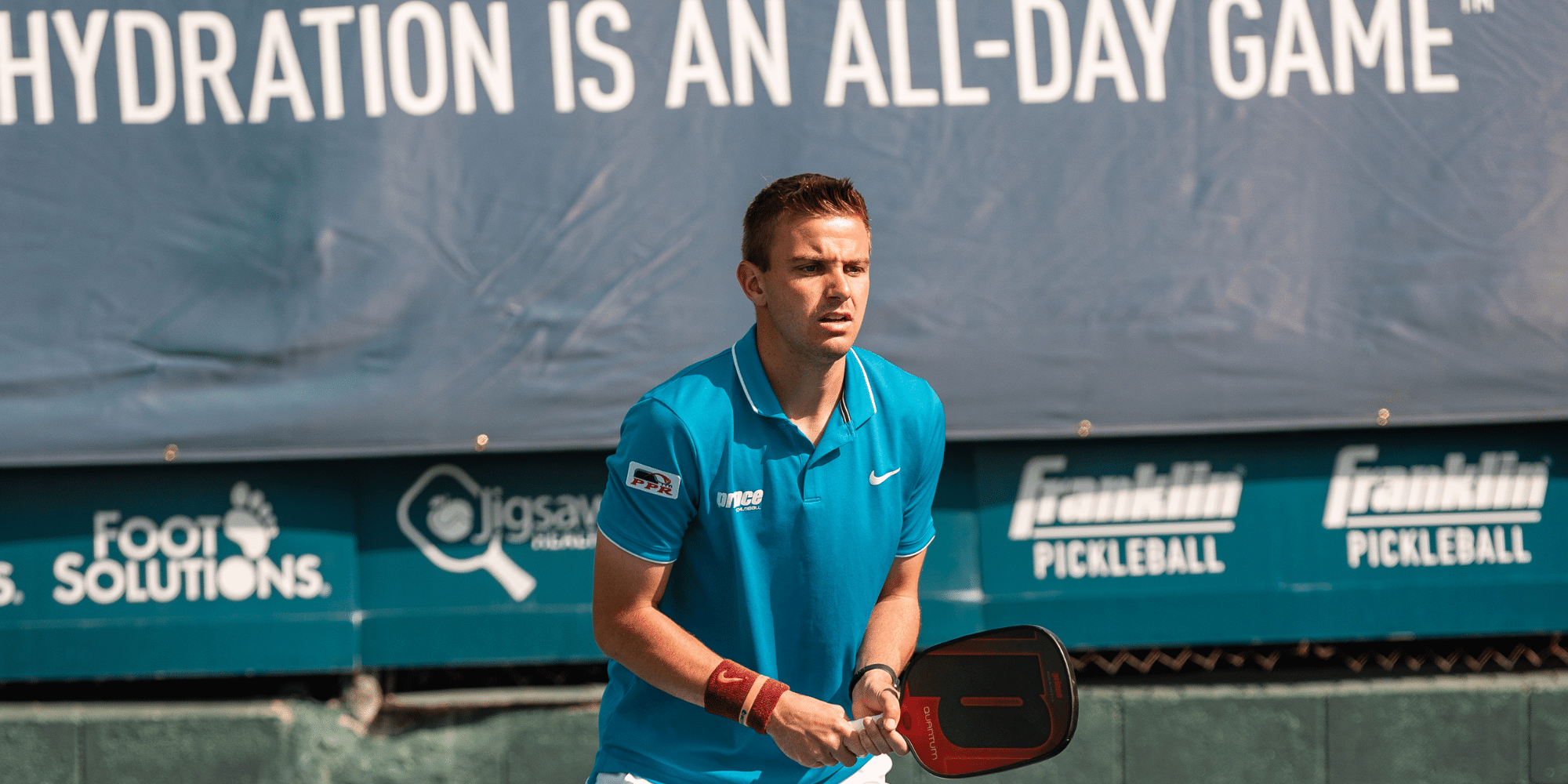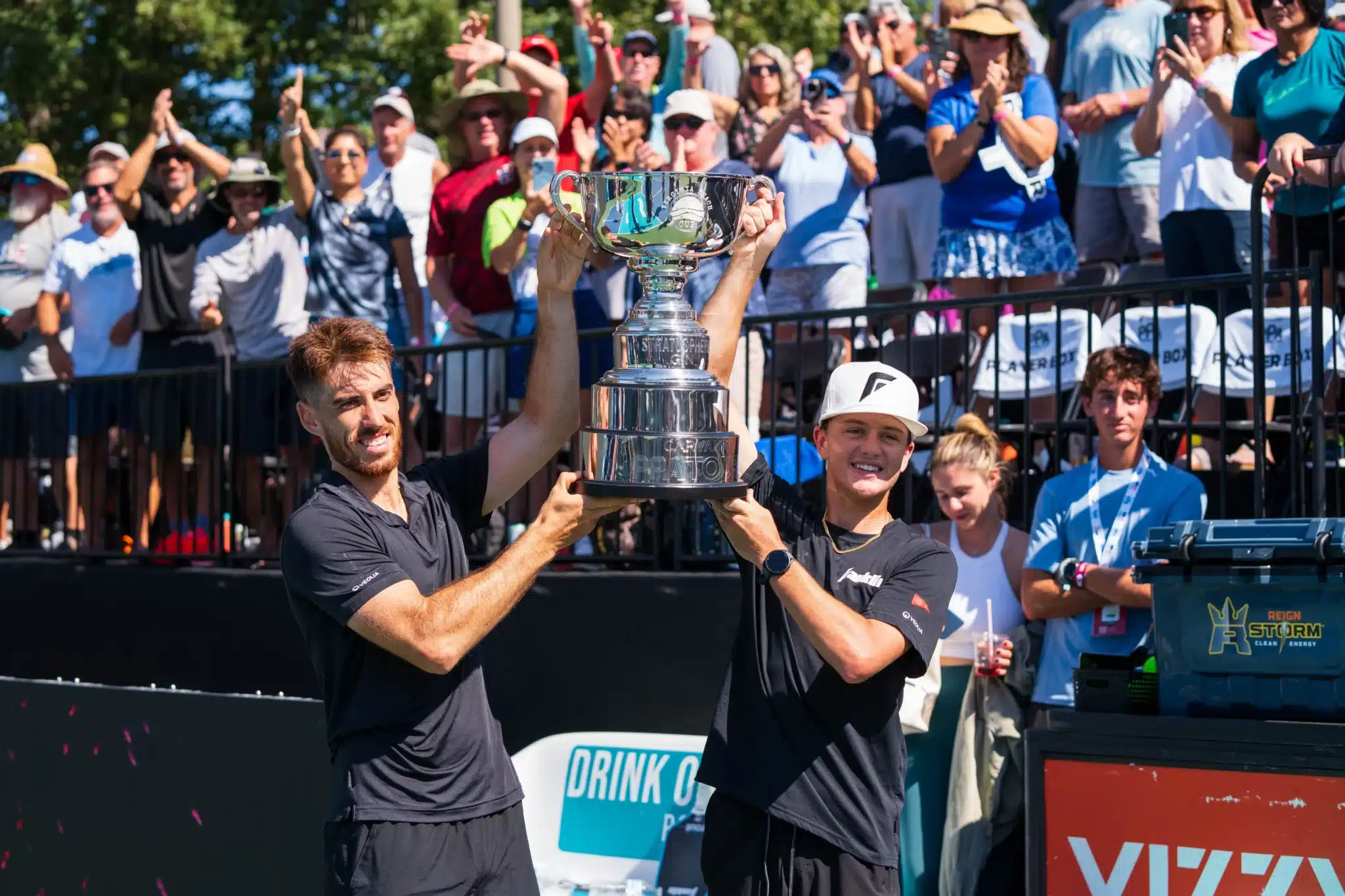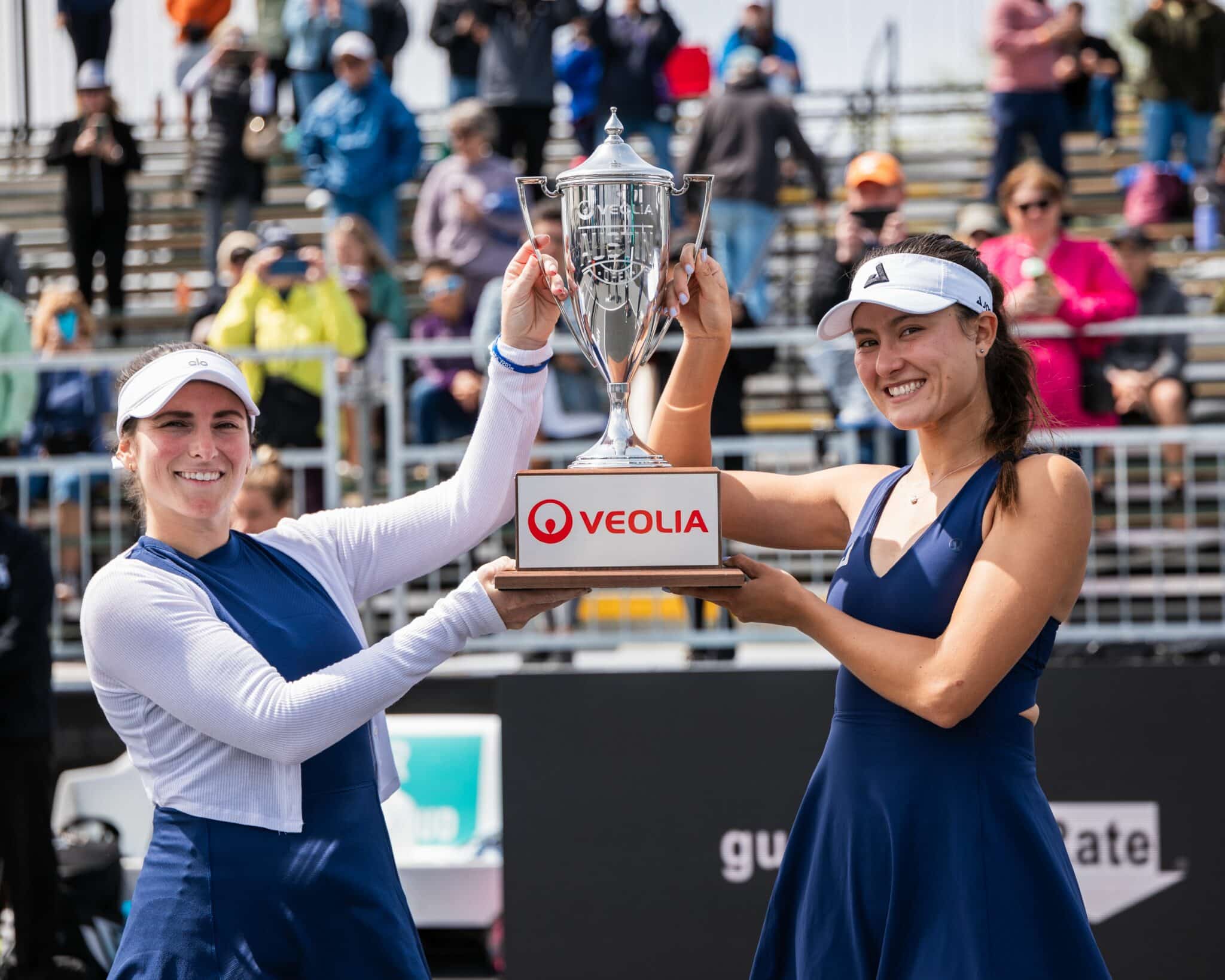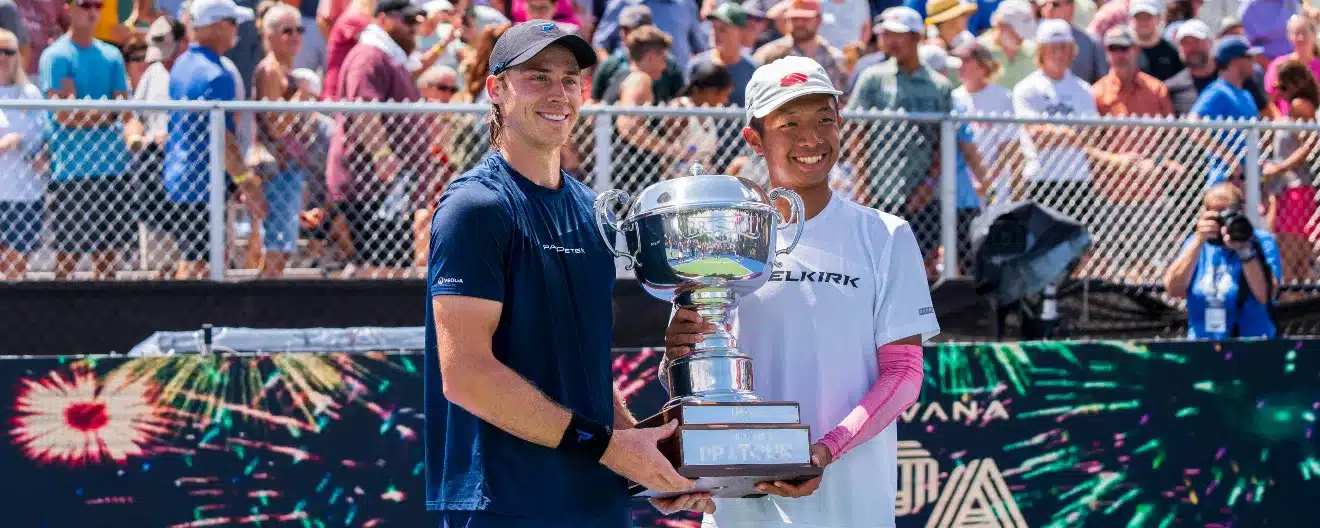Switching Over: A Conversation on the Overlap Between Racquet Sports
| July 11, 2023

Guest piece by tennis and pickleball pro athlete, Collin Johns
When people see pickleball being played for the first time, their first thought is often giant ping-pong or miniature tennis… albeit with a higher decibel level. Although pickleball was invented in 1965, it was almost unheard of until eight to ten years ago when it took off in many retirement communities in places like Florida and southern California. It is now played by millions and is the nation’s fastest growing sport, not just with seniors but with players of all ages and backgrounds.
So what is it about this new sport that makes it so popular and what other sport does it compare to most? As the Head Racquets Professional at the Baltimore Country Club, I play and teach many different racquet sports including tennis, platform tennis (paddle), squash, and, of course, pickleball. I also grew up playing a high level of table tennis with my brother, Ben Johns, and training at one of the premier facilities in the U.S., which leads me to believe that I hold a unique perspective on how other racquet sports compare to pickleball. Each sport contains elements that carry over onto the pickleball court, which players who have converted from other sports have been quick to take advantage of. Pickleball is still very much evolving on both the playing and the teaching side due to so many new players from different backgrounds picking up paddles, and I believe it will continue to do so throughout the next several years. Shots like a two-handed backhand were a rarity even a few years ago but are now commonplace at the highest levels.
The sport that has had the greatest impact on pickleball is undoubtedly tennis. Given the choice of playing one racquet sport prior to pickleball, one would have to choose tennis above all others. The value of having general racquet control, court vision, technically sound strokes, and familiarity with lateral movement cannot be overstated. While it is far from necessary to have had experience playing tennis to become proficient at pickleball, a nearly universal theme of top professionals is that they were, to some extent, tennis players prior to pickleball. With that being said, a high-level tennis player is not guaranteed success beyond a certain level, and many good tennis players have struggled with the initial transition.
(Check out our article “Pickleball Vs Tennis“)
Another sport that pickleball borrows from is certainly table tennis. Whether it is rolling topspin strokes, quick reflexes, controlling your paddle angle, or spin recognition, the similarities that exist between table tennis and pickleball are apparent. Part of the addictive nature of pickleball comes from the quick exchanges that are so characteristic of it and table tennis. Players coming from table tennis have had much success on the pickleball court and (in my completely unbiased opinion) the most dangerous attacking shot at the pro level, the Ben Johns backhand roll, was largely developed in our basement during hours of play on our ping-pong table.
(Check out our article “Pickleball Vs Ping Pong“)
Another sport that I have recently become convinced shares similarities with pickleball is platform tennis. More commonly referred to as paddle, it is played outdoors in the wintertime in primarily the northeast and some parts of the midwest. A paddle court has almost the exact dimensions as a pickleball court (just two feet wider), with the same net height and paddles similar in length. I have found some of the tactics and techniques that carry over onto the pickleball court are: letting out balls go, protecting your body with your backhand volley, targeting the body to draw pop-ups or errors, using speed differential to throw off your opponent’s timing, and adding shots that are specific to paddle such as the two-handed forehand and backhand volley. The number of pickleball players who have experience playing paddle is currently small, but I expect this number to grow as the popularity of pickleball grows in the northeast.
And finally, for all the squash players out there who want to hear that their skills are transferable to the pickleball court, I have good and bad news. The bad news is that you cannot chop the ball or break your wrist. (Coaches usually have duct tape handy for taping squash players’ wrists in place.) But on the upside, you can benefit enormously from being able to lunge more efficiently, simplifying your footwork by minimizing the number of steps needed to get to any given shot, and expanding your possible contact points by being comfortable with striking the ball from behind you.
To say that these widely diverse techniques and tactics have made it into the pickleball mainstream would be an overstatement, but certainly some of them have been and will continue to be standardized in the future. Two-handed backhands, rolling, and simplifying footwork patterns have all been recent additions to the pickleball handbook. I have had the opportunity to play, practice, and teach with some of the top players/coaches such as Simone Jardim, Kyle Yates, and of course Ben Johns. Interestingly, while there are plenty of common themes, they each have their own way of thinking about the game and I have adjusted some of my own opinions after learning from them. Additionally, completing the teaching certification processes of both the IPTPA and PPR benefited me as a coach by allowing me to understand both of their schools of thought. PPR’s less-is-more footwork approach is quite a breakthrough for many players, especially those coming from tennis, and is an important part of understanding where tennis and pickleball part ways.
As someone who turned from professional tennis to professional pickleball, I can relate to going through the process of taking advantage of the racquet skills tennis has given me while at the same time making adjustments by borrowing elements of the different sports I have played and taught. I have recently found myself hitting a two-handed forehand reflex volley, which was taken straight from the paddle court, and when I hit my returns, I use a linear squash style slice that increases my control of the ball. In complement to these strokes, I modeled my forehand roll (what might be considered my signature shot) after my forehand loop in table tennis. To use my brother’s explanation for it, my pickleball game has been “Frankensteined” by stealing shots from other sports. While this might be considered humorous, it is also very true and is a great example of the benefits of never being satisfied with your game being static, but instead being open to experimentation. Whether any of these shots ever become traditional teaching fare, only time will tell, but this goes to show that pickleball is still in its infancy and will continue to blend elements of other sports into how it is approached and played. This will keep the sport growing and allow players to bring their own unique styles to the court. The most important thing is to keep an open mind and enjoy the process of pickleball’s evolution as a sport.





